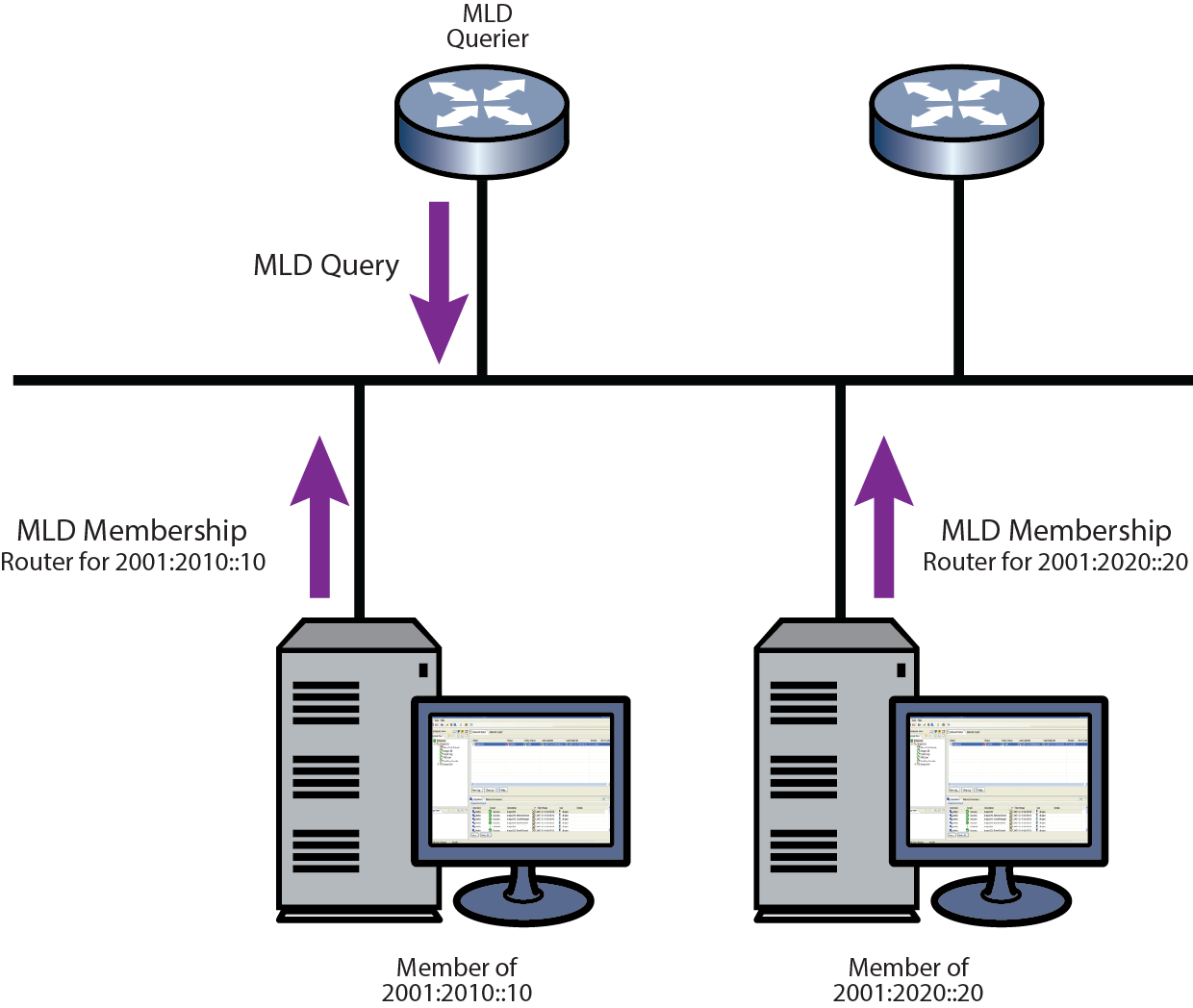Multicast allows a source to send a single copy of data using a single IP address from a well-defined range for an entire group of recipients (an MLD group). A source sends data to an MLD group by simply setting the destination IP address of the datagram to be the MLD group address. Sources do not need to register in any way before they can begin sending data to a group, and do not need to be members of the group themselves. Routers between the source and recipients use the group address to route the data, forwarding duplicate data packets only when the path to recipients diverges.
Hosts that wish to receive IPv6 data from the MLD group join the group by sending a message to a multicast router on a local interface, using MLD.
Multicast routers communicate among themselves using a multicast routing protocol, such as DVMRP of PIM-SM. These protocols calculate a multicast distribution tree of recipients to ensure that:
Group membership management is fundamental to the multicasting process. An arbitrary group of receivers can express interest in receiving a particular multicast stream, regardless of the physical or geographical boundaries of its members.
The purpose of IPv6 multicast group management is to optimize a switched network‘s performance so multicast packets will only be forwarded to those ports containing MLD group hosts or multicast switch devices instead of flooding to all ports in the subnet (VLAN).
MLD uses three key components to control multicast membership:

As shown in the above figure, an MLD-enabled device can periodically ask its hosts if they want to receive multicast traffic. If there is more than one device on the LAN performing IPv6 multicasting, one of these devices is elected querier and assumes the responsibility of querying the LAN for group members.
Based on the group membership information learned from MLD, a device can determine which (if any) multicast traffic needs to be forwarded to each of its ports. At Layer 3, multicast switch devices use this information, along with a multicast routing protocol, to support IPv6 multicasting across the Internet.
MLD provides the final step in IPv6 multicast delivery. It is only concerned with forwarding multicast traffic from the local switch device to group members on a directly attached subnetwork or LAN segment.
MLD neither alters nor routes any IPv6 multicast packets. Since MLD is not concerned with the delivery of IPv6 multicast packets across subnetworks, an external IPv6 multicast device is needed if IPv6 multicast packets have to be routed across different subnetworks.

 Print
this page
Print
this page Email this topic
Email this topic Feedback
Feedback